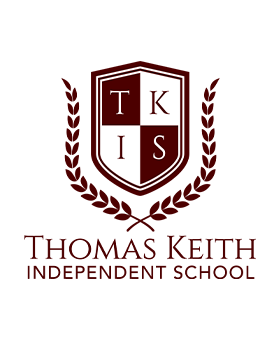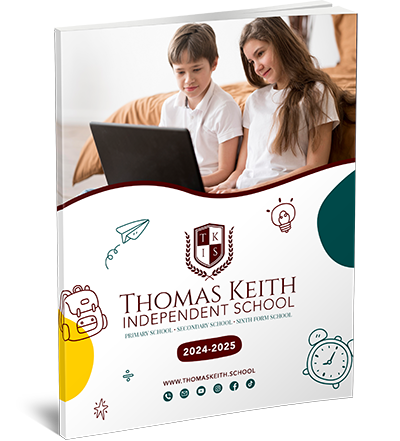
Designing a Tailored Curriculum for Homeschooling in Reception: A Comprehensive Guide
Planning a Comprehensive Homeschool Reception Curriculum
Welcome to our comprehensive guide on designing a tailored homeschooling curriculum for reception. At Thomas Keith Independent School, we specialise in delivering a holistic online British education, providing parents with the flexibility to customise their child’s learning experience. Homeschooling offers a unique opportunity for parents to design a comprehensive curriculum tailored to their child’s needs during reception. When planning a comprehensive homeschool kindergarten Curriculum, it’s essential to consider a range of subjects and activities that foster holistic development.
First, it is essential to establish clear learning objectives in literacy, numeracy, science, social studies, and the arts. To make learning engaging and dynamic, it’s beneficial to incorporate a variety of resources such as textbooks, workbooks, online programmes, and educational games. To create a cohesive learning experience, consider utilising thematic units that integrate multiple subjects.

Furthermore, consider your child’s learning style and interests when selecting instructional materials and activities. Incorporate hands-on learning, visual aids, and interactive projects to enhance their understanding and retention of concepts. Use technology judiciously as a supplemental tool to enrich their learning experience.
In addition to core academic subjects, prioritise social and emotional development. Include activities that promote communication, teamwork, problem-solving, and empathy. Allow opportunities for independent exploration, creative expression, and physical exercise to nurture well-rounded development.
It’s essential to set realistic goals and maintain flexibility within the curriculum. Make sure to regularly assess your child’s progress and make any necessary adjustments to the curriculum. Homeschool support groups and online resources can provide valuable insights and suggestions to enhance your curriculum.
Hands-on Math Activities for Homeschool Reception
At Thomas Keith Independent School, we understand the importance of hands-on learning in mathematics. Our live online classes offer engaging math activities, allowing children to explore concepts through manipulatives, shape recognition, measurement experiences, pattern building, and even practical applications like handling money in a virtual store. Here are some ideas to inspire hands-on math learning at home:
- Counting with manipulatives: Use objects like blocks, buttons, or toys to help children visualise and understand numbers. They can count, sort, and group these objects, developing number sense.
- Shape scavenger hunt: Explore the environment to find shapes such as circles, squares, triangles, and rectangles. This activity enhances shape recognition skills and spatial awareness.
- Measuring madness: Provide children with rulers, measuring tapes, and kitchen scales to measure objects around the house. This hands-on experience introduces measurement concepts such as length, weight, and capacity.
- Pattern play: Use coloured blocks, beads, or natural materials like leaves to create patterns. Encourage children to identify and extend the patterns, promoting critical thinking and logical reasoning.
- Money matters: Introduce coins and bills to teach children fundamental monetary values and simple transactions. Set up a pretend store or play “grocery shopping” to make learning about money practical and enjoyable.
- Math in the kitchen: Baking or cooking together offers measurement, fractions, and counting opportunities. Let children help measure ingredients or divide pizzas into equal slices, making math a tasty experience.
Teaching Reading and Writing Skills in Homeschool Reception
Developing strong reading and writing skills is essential during reception, and homeschooling provides a nurturing environment for personalised instruction. By incorporating effective strategies and engaging activities, parents can foster a love for reading and help children become confident writers. Here are some approaches to teaching reading and writing skills in homeschool reception:
- Phonics instruction: Teach letter sounds and their corresponding symbols through phonics-based activities. Use flashcards, letter puzzles, and interactive games to reinforce phonetic concepts.
- Read-aloud sessions: Read to your child regularly and encourage active listening. Discuss the story, characters, and plot to improve comprehension skills. Choose various books to expose them to different genres, including fiction, nonfiction, and poetry.
- Sight words practice: Introduce high-frequency words that cannot be sounded phonetically. Use flashcards, word games, and hands-on activities to reinforce sight word recognition and improve reading fluency.
- Writing practice: Provide ample writing opportunities, starting with simple activities like tracing letters and progressing to forming words and sentences. Encourage journaling, storytelling, and creative writing to develop their expressive skills.
- Word building: Engage in word-building exercises using letter tiles, magnetic letters, or word puzzles. Encourage children to manipulate letters to create new words, promoting spelling skills and vocabulary development.
- Literacy-rich environment: Create an environment filled with print, including labels, signs, and easily accessible books for your child. Encourage independent reading and writing by setting up a cosy reading corner and providing materials like paper, pencils, and markers.

Incorporating Outdoor and Physical Education in Homeschool Reception
Outdoor activities and physical education are vital components of homeschooling reception, promoting physical health, social interaction, and a connection with nature. By incorporating outdoor activities and structured physical education, parents can provide a well-rounded education experience. Here are some ideas for integrating outdoor and physical education in homeschool reception:
Nature walks and scavenger hunts: Take regular walks in parks or natural settings, encouraging children to observe and appreciate their surroundings. Create scavenger hunt lists where they can search for specific plants, animals, or natural objects, fostering curiosity and exploration.
Gardening and plant studies: Involve children in gardening activities, teaching them about plants, life cycles, and environmental responsibility. They can plant seeds, care for plants, and observe their growth, instilling a sense of environmental awareness and connection.
Outdoor games: Organise games like tag, duck-duck-goose, or Simon Says in the backyard or local park. These activities enhance gross motor skills, coordination, and teamwork while providing social interaction opportunities.
Obstacle courses: Set up obstacle courses in the yard using hula hoops, cones, and ropes. Children can navigate the system, developing balance, agility, and problem-solving skills.
Yoga and mindfulness: Introduce simple yoga poses and mindfulness exercises, fostering relaxation, body awareness, and emotional well-being. Use resources like children’s yoga videos or books to make these activities accessible and engaging.
Sports exploration: Introduce basic sports concepts like throwing, catching, and kicking through age-appropriate activities. Provide opportunities for children to try different sports, such as soccer, basketball, or tennis, allowing them to discover their interests and develop physical skills.
Transitioning from Homeschool Reception to Primary School
Preparing for the transition from homeschool reception to primary school is a significant milestone. At our online British school, we understand the importance of a smooth transition. We offer comprehensive support, including guidance on navigating the school system, fostering socialisation opportunities, ensuring academic readiness, establishing routines, facilitating communication with the elementary school, and providing virtual visits to our school to familiarise your child with the learning environment.

- Familiarise yourself with the school system: Research the primary school your child will attend. Understand their curriculum, policies, and procedures. Attend orientation sessions or meet with school staff to gather information and clarify concerns.
- Socialise with peers: Encourage your child to interact with other children through playdates, homeschool groups, or extracurricular activities. This helps develop social skills and builds confidence in forming new friendships.
- Academic readiness: Assess your child’s academic progress and ensure they have attained the necessary skills for starting primary school. Focus on foundational literacy and numeracy skills, ensuring they can read, write, and perform basic math operations.
- Establish routines: Gradually introduce structured practices that mirror a typical school day. Set consistent waking up, mealtime, and bedtime schedules to help your child adjust to the way they will encounter in primary school.
- Communication with the school: Establish open lines of communication with the primary school. Introduce yourself as a homeschooling parent, discuss your child’s strengths and areas of development, and collaborate on strategies to support a successful transition.
- Visit the school: Arrange visits to the primary school before the start of the academic year. Familiarise your child with the building, playground, and classrooms. Meeting teachers and other staff members can help alleviate anxiety and create a sense of familiarity.
Remember to approach the transition with positivity and reassurance. Emphasise the exciting aspects of attending primary school, such as new friends, engaging activities, and new learning opportunities. With proper preparation and support, transitioning from homeschool reception to primary school can be an exciting and smooth process for you and your child.





